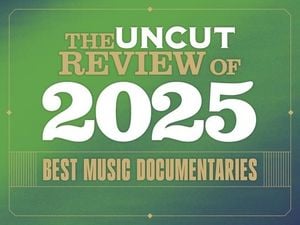On a recent Saturday night in San Francisco’s financial district, the city’s streets had quieted for the weekend—but inside a gleaming tech office tower, the lights blazed as if it were midday. Rows of employees hunched over laptops, the glow of their screens cutting through the darkness. In the kitchen, someone nursed an energy drink, their day far from over. This wasn’t a special event or a last-minute deadline. As a security guard outside quipped, “This is every weekend. We had to turn off the building alarm. It wouldn’t stop alerting for break-ins, because people are here around the clock.”
This scene, described by ctech on October 27, 2025, captures the new reality sweeping Silicon Valley: the return—and normalization—of the 996 work culture. The name says it all: 9 a.m. to 9 p.m., six days a week. It’s a grueling 72-hour schedule that originated in China’s tech industry, was banned there in 2021 after worker deaths, and now, ironically, is being embraced by startups and tech giants in the world’s innovation capital.
According to Axios, the 996 schedule is gaining momentum as companies compete for dominance in artificial intelligence. The race is fierce, and the stakes are high. Data from Ramp, a corporate expense platform, shows a marked increase in weekend takeout orders on corporate cards in San Francisco this year—an indicator that more tech workers are clocking in on Saturdays. Some startups, such as Sonatic, have even posted job listings requiring on-site work “seven days a week,” sweetening the deal with free housing and perks like a dating app subscription. Their 21-year-old CEO told The Washington Post, “The chances of success increases when everyone is focused on the mission together.”
But the work ethic isn’t just a matter of policy—it’s become a badge of honor. Job postings openly advertise expectations of at least 70 hours per week. On LinkedIn, 996 is listed alongside technical skills. Founders boast about weekends in the office as proof of their team’s seriousness, and investors now ask about office beds and willingness to “grind” as much as about product vision. As one AI cofounder told the SF Standard, “The current vibe is no drinking, no drugs, 9-9-6, lift heavy, run far, marry early, track sleep, eat steak and eggs.”
At the very top, the culture is even more extreme. The Wall Street Journal reports that top AI researchers are logging 100-hour workweeks, joking about a “0-0-2” schedule—midnight to midnight, with a two-hour break on weekends. Some of these experts are now millionaires many times over, yet several admit they haven’t had time to spend their new fortunes. The pressure to perform is relentless, and the rewards, while immense, are often left untouched.
How did Silicon Valley end up here? The roots stretch back to the early days of the tech industry, a place always known for its “California casual exterior and workaholic interior,” as University of Washington history professor Margaret O’Mara told NPR’s KOSU on October 26, 2025. But the recent shift is more than a return to form—it’s a direct response to changing economic tides. During the early years of the COVID-19 pandemic, tech companies were flush with cash, growing rapidly, and perks like nap rooms and pingpong tables were designed to keep employees happy—and at the office. Workers had bargaining power and could push back against unreasonable demands.
That era is over. Between 2022 and 2024, more than half a million tech workers were laid off, including 12,000 at Google, 21,000 at Meta, and 27,000 at Amazon, according to ctech. Interest rates have soared, venture capital has tightened, and the “growth at all costs” mantra has been replaced by a demand for results. Now, employees are grateful just to have a job, and employers have seized the upper hand. The 996 model, once unthinkable in the West, has become official policy at many startups.
Yet, as O’Mara points out, the culture of overwork is inherently exclusionary. “It does exclude a whole bunch of people that might have other obligations—not only people who might want to be doing things outside of work, but for caregiving reasons can’t work all the time and put work before everything else,” she said. The tech industry, already skewed young and male, is doubling down on a culture that rewards those with no outside commitments and sidelines everyone else.
For many, the motivation isn’t the hope of striking it rich, as it was during the internet bubble of the late 1990s. Back then, people worked 90-hour weeks because they genuinely believed they’d become billionaires. Today, the drive is often fear—fear of being fired, fear of being replaced by AI, fear of being left behind. As O’Mara explained, “Workers have to work hard to show their worth. It is a job market where there are threats of layoffs. There also are threats of being replaced by AI, particularly if you’re a coder.”
Despite the normalization of 996, the toll is real. Overwork in tech isn’t new—sleeping in the office and marathon coding sessions have long been part of the lore. But a sustained 996 schedule, as Axios notes, is different from a temporary burst of effort. It’s a mode of work that prioritizes visible activity—being at a desk, logged into Slack—over actual output. Computer science professor Cal Newport, in his book Slow Productivity, argues that “doing fewer things is the key to producing good work.” Burnout, he warns, is the inevitable result of relentless grind.
There’s a bitter irony in Silicon Valley’s embrace of a work culture that China’s Supreme Court ruled illegal in 2021, calling it “cynical exploitation, bad for workers, bad for society—good only for companies squeezing every possible hour from employees’ bodies and souls,” as ctech reports. In China, the 996.ICU movement—“work 996, end up in ICU”—galvanized tech workers to push back, ultimately leading to legal reforms. In San Francisco, though, the same model is presented as a promise for the future.
As the AI race accelerates and the balance of power tilts further toward employers, the 996 schedule is likely to remain a fixture in Silicon Valley—for now. Whether it leads to the breakthroughs companies crave, or simply burns out a generation of workers, remains to be seen. For those grinding late into the night, the question lingers: are people serving technology, or is it supposed to be the other way around?






